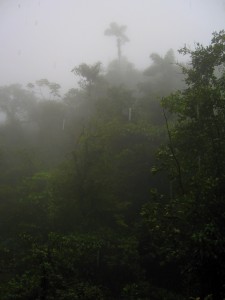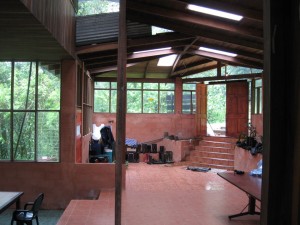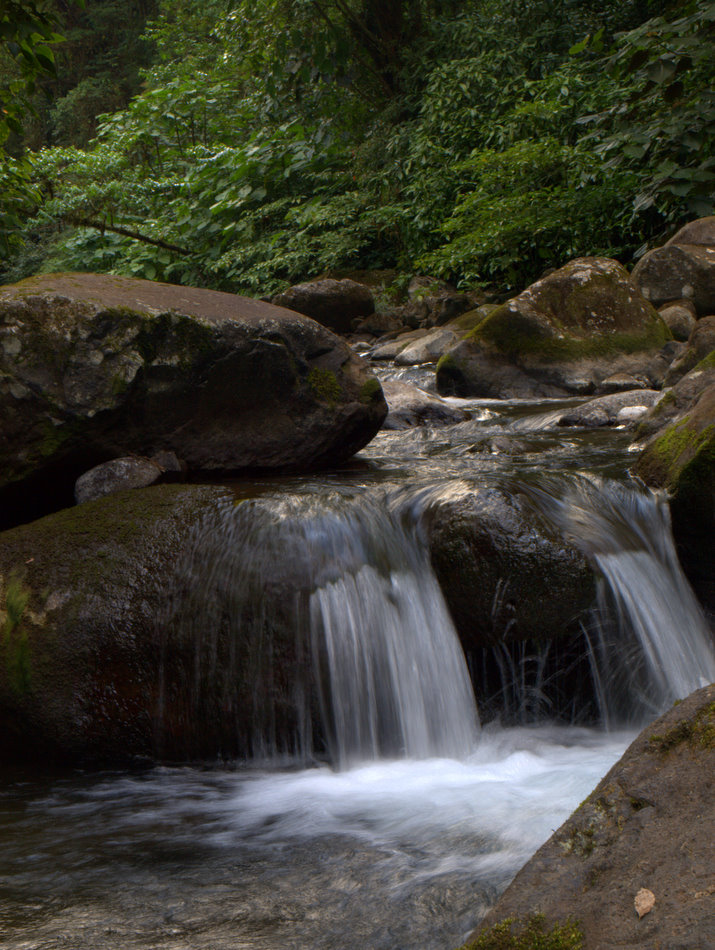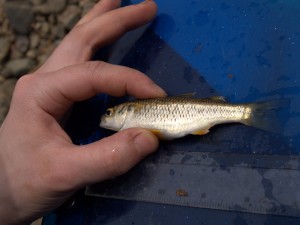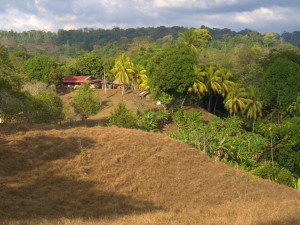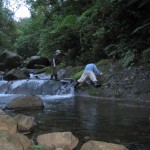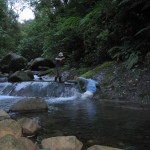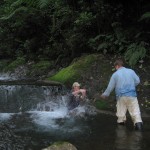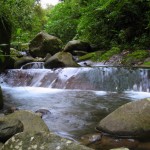The moment we arrived at La Reserva biological Alberto Manuel Brenés, we jumped into the nearest posa (river pool) and snorkeled in search for fish. With no luck, we moved to the cascade shown here and allowed the flow to massage our backs. It was beautifully clear, but bitterly cold.
Tag Archives: RBAMB
Mullet
Río Abuela
A river Mike sampled for fish was named after the land it drained: Brian’s grandmother’s house and surrounding farm. Brian, Mike’s assistant and friend, is an 18 year-old Costa Rican born and raised on the Osa. His grandmother’s farm, pictured here, was unbearably hot. The picture doesn’t really do the terrain justice; are there any suggestions on how to reduce a flattening effect in photos with lots of depth of field? (or maybe that’s impossible without stereo-lenses)
Farewell Rio WTF
My first post from Costa Rica is a farewell to the first leg of my trip. This morning, at 4:30 AM, Allison and Erin climbed into a taxi for the airport, and so ended our three week excursion to the Osa and premontane rain-forest. I find it fitting then to post a picture of the four of us posing atop the first cascade of several in a river we dubbed Rio WTF. The river’s original name (Koyok) was immediately revoked when we realized that we would need to climb two waterfalls and a mountain to collect leaf samples from it (Mike and I were able to do it in under 10 sec with minor injuries). If you’re not aware of what the new name’s acronym stands for, google it.
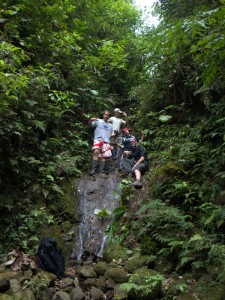
Rio San Lorencito
Soon, I’ll be experiencing this tropical, premontane, river surrounded by wet forest with the folks in the sequence of photographs below: Mike and Erin. We may be more prepared for a hike through the river this time though….
Alberto Manuel Brenes Biological Reserve
I will be staying in a field station at the Alberto Manuel Brenes Biological Reserve outside of San Ramon, Costa Rica for nearly two weeks. There are several activities planned for our stay here, including (1) research on litter transport and retention in streams and (2) finding cool amphibians and reptiles. The pictures posted here were taken within the field station. The entrance is shown on the left, and a view of some clouds rolling through the rain forest from the ‘gallery’ is on the right.